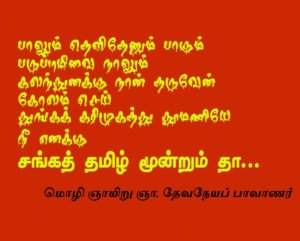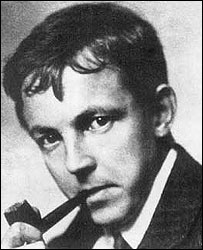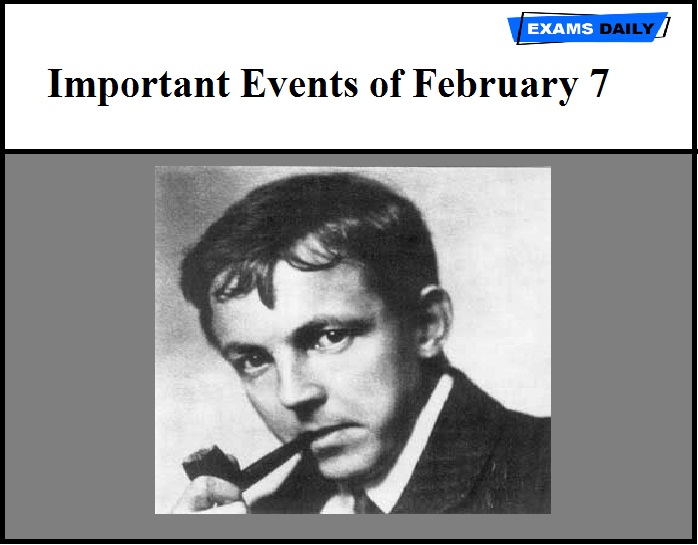Important Events of February 7
Devaneya Pavanar
- Devaneya Pavanar (ஞா. தேவநேயப் பாவாணர்; also known as G. Devaneyan, Ñanamuttan Tevaneyan; lived 1902–1981) was a prominent Indian Tamil author who wrote over 35 books.
- He was a staunch proponent of the “Pure Tamil movement” and initiated the Etymological Dictionary Project primarily to bring out the roots of Tamil words and their connections and ramifications.
- In his 1966 Primary Classical language of the World, he argues that the Tamil language is the “most natural” (iyal-moḻi) and also a proto-world language
- He believed that its literature, later called Sangam literature and usually considered to have been written from 200 BCE and 300 CE, spanned a huge period from 10,000 to 5,500 BCE .
- These datings gain popularity by journalists such as in Graham Hancock’s book Underworld: The Mysterious Origins of Civilization.
Devaneya Pavanar composed many musical pieces (Isaik kalambakam) and many noteworthy poems, including the collection of Venpa. The title Senthamiḻ Selvar was conferred on him by the Tamil Nadu State Government in 1979, and he was also addressed as Moḻi Ñayiru (மொழி ஞாயிறு) “Sun of language”.

History :
- Gnanamuthu Devaneyan Pavanar was born on 7 February 1902 in Sankaranayinarkoil or (Sankarankovil),Tamil Nadu to his parents Thiru.Gnanamuthu Devendrar and Paripuranam Ammaiyar.
- He was educated in the C.M.J. High School, Palayamkottai, S.S.L.C. (1916–1918) and trained as a teacher in Madras University.
- He married in 1930 and had four sons and one daughter, the daughter being the fourth child.
- He worked as a Tamil teacher in several High Schools, 1922–1944. During this time, he pursued autodidactic studies of Dravidian philology and comparative linguistics.
- Diverse Silber- und Kupferplatten tamilischer Nationalisten
- In February 2006 wurde eine Erinnerungsbriefmarke Devaneya Pavanars in Chennai herausgebracht.
Tamil Vs Sanskirt :
- Pavanar’s Vadamoli Varalaru argues that hundreds of Sanskrit words can be traced to a Tamil origin, and at the same time he insisted that pure Tamil equivalents existed for Sanskrit loan words.
- He claimed that Tamil is a “superior and more divine” language than Sanskrit. In his view the Tamil language originated in “Lemuria” (இலெமூரியா Ilemūriyā), the cradle of civilisation and place of origin of language. He believed that evidence of Tamil’s antiquity was being suppressed by Sanskritists.
Awards and honors :
- A Silver plate presented to him by the Tamil Peravai, Salem in 1955 in appreciation of his service to Tamil .
- A Copper Plate presented to his by the Governor of Tamil Nadu 1960 in appreciation of his contribution to the collection of administrative terms in Tamil .
- A Silver Plate presented to his by the South Indian Saiva Sinddhanta Works Publishing Society, Thirunelveli Ltd., in 1970 in appreciations of his research work in Tamil philology and etymology.
- Official centenary celebrations of Pavanar were held at Sankarankoil (5 February 2002) and Gomathimuthupuram (6 February) of Tirunelveli district and at Chennai (8. February), attended by the Minister for Education and the Chief Minister O. Panneerselvam .
- In February 2006, a commemorative stamp of Devaneya Pavanar was released by the Postal Department in Chennai .
- In October 2007, a memorial was installed at Madurai by the Government of Tamil Nadu in honour of Devaneya Pavanar.

[table “37” not found /]
G. H. Hardy Birth Day
- Godfrey Harold “G. H.” Hardy was born on 7 February 1877 in Cranleigh, Surrey, England.
known for
- He was an English mathematician, known for his achievements in number theory and mathematical analysis.
- In biology, Hardy is known for the Hardy–Weinberg principle, a basic principle of population genetics.
- In addition to his research, Hardy is remembered for his 1940 essay on the aesthetics of mathematics, titled A Mathematician’s Apology.
- He was the mentor of the Indian mathematician Srinivasa Ramanujan.
Childhood & Early Years
- When just two years old, he wrote numbers up to millions, and when taken to church he amused himself by factorising the numbers of the hymns.
- After schooling at Cranleigh, Hardy was awarded a scholarship to Winchester College for his mathematical work. In 1896 he entered Trinity College, Cambridge.
- In 1919 he left Cambridge to take the Savilian Chair of Geometry at Oxford.
Major Works
- In mathematics, G. H. Hardy is best remembered for his work on ‘Hardy–Ramanujan asymptotic formula’ and ‘Hardy–Littlewood circle method,’ while in biology, he is famous for his work on ‘Hardy–Weinberg principle’, which deals with population genetics.
- He is equally known for his 1940 book, ‘A Mathematical Apology’. In it, he had used the term “apology” to mean formal justification. Although it deals mainly with the aesthetics of mathematics, he had also added some personal content to it, giving us an insight into the mind of a working mathematician.
Awards & Achievements
- G. H. Hardy received a number of awards, among which the most important prizes were Smith’s Prize (1901), Royal Medal (1920), De Morgan Medal (1929), Chauvenet Prize (1932), Sylvester Medal (1940) and the Copley Medal (1947).
- In 1910, at the age of 33, Hardy was elected a Fellow of the Royal Society.
- He was the president of the London Mathematical Society from 1926 to 1928 and again from 1939 to 1941.
- In 1936, he received an honorary doctorate from the Harvard University.

Death
- He died in Cambridge, Cambridgeshire, England on 1 December 1947.
To Know All Daily Events Click Here
For  Online Test Series Online Test Series | Click Here |
| To Subscribe | Click Here |
| To Join | Click Here |
| To Join | Click Here |

